How to Creatively and Effectively Address Stressful Issues Using Art in Therapy
Finding the right words to describe your innermost thoughts and feelings can be difficult. Some folks struggle with talking about themselves while others can’t find the words to accurately describe their pain or trauma. That’s why I encourage the use of artmaking in sessions.
When incorporating art into therapy, the emphasis is on the artmaking process. It’s not about how well you can draw or how talented you are. Instead, we focus on the thoughts and emotions that surface during the activity. For a better understanding of how this works, let’s look at a common art activity, also known as an art directive.
Starting Instructions
Imagine I give you two pieces of paper, each with an outline of a human face. For the first face, I ask you to depict how you think other people see you or how you present yourself in public. We’ll call this your “mask.” You can use symbols, words, colors, and anything else you want to fill it in. If you prefer, you can even use glue and magazine clippings to create a collage instead. For the second page, I ask you to depict your “true self,” or how you see yourself. Again, this can be through symbols, colors, words—whatever feels right!
Before you start, I let you know we’ll spend about 10 - 15 minutes on artmaking. This allows us proper time to process the resulting thoughts and emotions, as well as the final product, without getting carried away. In most cases, I would watch you while you go through the creative process. This is for a couple reasons.
Therapist Role & Processing
First, even though we’re doing something different, therapy is still about you! The idea is to give you my full attention, and to make sure my mind isn’t focused on unnecessary things. Second, watching someone while they make art can reveal things a person may not even be aware of themselves. For example, I might notice you seem hesitant when choosing symbols or words to write on your “true self” face. Maybe you couldn’t decide between two similar words or you were struggling to decide whether something belonged there at all. Generally, I would keep any observations to myself until after the artmaking period is up. This prevents me from unintentionally influencing your work and helps to keep you focused.
Once time is up, I’d ask you to describe what you made. While I know both images are faces, I would ask you to specifically describe words or symbols you selected. This prevents me from making any assumptions about certain symbols and what they might represent and allows you a chance to explain your thought process. This is also a great time for us to explore any cultural significance specific symbols or words may hold.
From there, we would discuss how you felt during the artmaking process. Did certain words or symbols bring up painful memories? What was it like to use a creative approach versus traditional talk therapy? Is this something you enjoyed or was it difficult? This isn’t a complete list of everything that might be asked, but a few sample questions to help you understand what to expect.
The Purpose Behind the Exercise
This exercise is helpful for folks who are struggling with their identity or for folks who feel a need to hide their true self from the world. It allows us to compare how you perform or act around most people with how you truly feel or wish to be seen. By comparing the two, we can begin to process how these identities might be similar or different, and how this may result in distress. We would build on this using more traditional talk therapy, and work towards incorporating both identities into a healthier, more authentic you!
Different Exercises & Starting Your Journey
If you’re thinking this exercise doesn’t sound appealing or you can’t see yourself completing it, that’s okay. The beauty of using art in therapy is the ability to cater exercises to each person’s individual needs. There are exercises to address mindfulness, anxiety, depression, and a wide array of other topics. Remember, there’s no prior experience or talent needed to start benefiting from art in a therapeutic setting!
Search Our Other Blogs!
Interested in Counseling for Anxiety, Depression, Trauma, or Grief and Loss?
If you’re a Marylander who knows that counseling is the direction you need to take, the therapists at LifeSpring Counseling Services are here to help. We offer online counseling services for mindfulness, depression, anxiety, trauma, and grief and loss. We also offer Brainspotting as a specialized service, and Brainspotting can be done online, too!
Here’s how you can get started! Online counseling for anxiety, depression, trauma, and grief and loss aren’t the only services offered at our Maryland office
The counselors and social workers at our Maryland office also offer counseling services for trauma, grief and loss, boundary setting, communication skills, and difficult life transitions. We also offer specialized counseling services including Brainspotting and spiritually-integrated counseling. Because we are located next to several local universities, we also work with college students and international students.
Written by Robin Mayfield, LCSW-C
Photos: cottonbro, George Milton, RF._.studio, Artem Podrez, and Anastasiya Vragova
Date of Download: 8/10/2021



